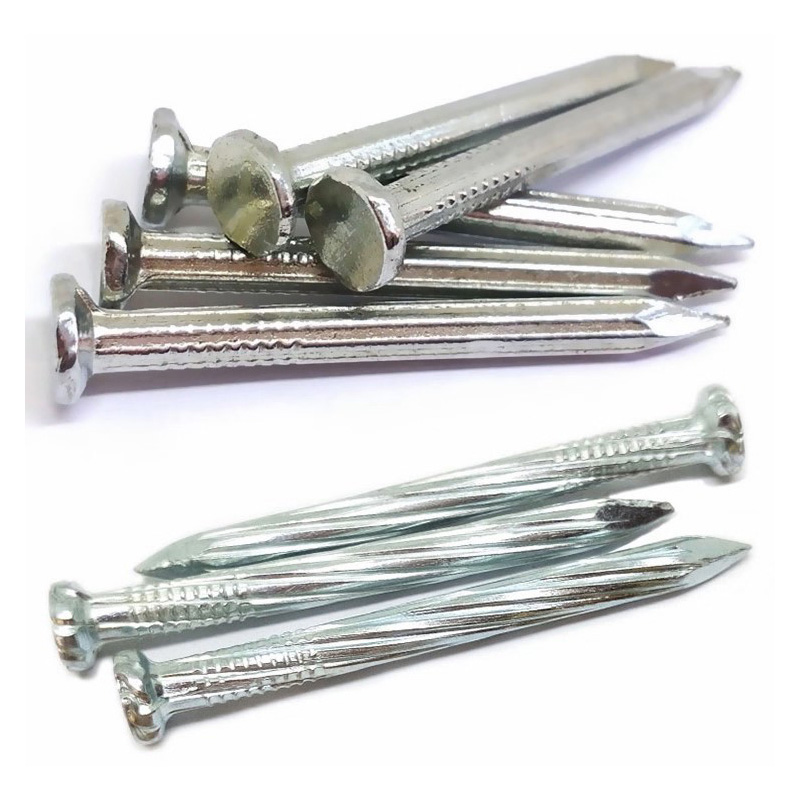What Are Common Wire Nails Used For?
Common wire nails, often referred to simply as common nails, are a staple in the world of construction and woodworking. These unassuming pieces of hardware play a crucial role in joining, fastening, and securing various materials. They are a versatile and essential component in the toolbox of builders, carpenters, and DIY enthusiasts alike. In this article, we will explore the many applications of common wire nails and the vital role they play in construction and woodworking projects.
The Anatomy of Common Wire Nails
Common wire nails are typically constructed from steel and have a simple yet effective design. They consist of a cylindrical shaft with a pointed tip on one end and a flat head on the other. The head is usually round or sometimes countersunk to sit flush with the surface of the material being fastened. These nails are available in a variety of lengths and gauges to accommodate different applications.
Framing
One of the most common and essential uses of common wire nails is in framing. These nails are the backbone of structural construction, holding together wall studs, roof trusses, and floor joists. Their sturdy design ensures that the frame of a building is stable and secure. Common nails are ideal for framing due to their reliable hold and resistance to withdrawal forces, making them an integral part of constructing homes and commercial buildings.
Carpentry
Carpenters rely heavily on common wire nails for a wide range of projects. From crafting fine furniture to building functional cabinets and shelves, these nails are instrumental in creating strong and durable wood joints. Their versatility and affordability make them a top choice for carpentry tasks, whether it's attaching trim, assembling drawers, or securing moldings.

Siding and Sheathing
In the world of exterior finishing, common wire nails come into play when installing siding materials. Whether it's wood, vinyl, or another type of siding, these nails are instrumental in securing the material to the structure. The same holds true for sheathing applications, where common nails fasten panels of plywood or oriented strand board (OSB) to the wooden framework of walls and roofs. They provide the necessary strength to create a solid and stable structure, ensuring the safety and longevity of a building.
Flooring
When it comes to installing hardwood or softwood flooring, common nails are the go-to choice. They are used to secure the floorboards to the subfloor, creating a beautiful, durable, and long-lasting flooring surface. The nails are driven through the tongue and into the subfloor, holding the boards in place while allowing for a neat and tidy finish, free from visible fasteners.
Roofing
Roofing applications demand materials that can withstand the elements, and common wire nails are up to the task. These nails are used to attach roofing materials, such as shingles and roofing felt, to the roof deck. Their exceptional holding power and resistance to corrosion make them a reliable option for securing the roof and protecting the interior of a structure from the elements.
General Construction
In general construction tasks, common nails are indispensable. They are used for framing walls, securing plywood or OSB, and fastening structural components. Their strength and versatility make them a fundamental element of any construction project, whether it's building a new structure or renovating an existing one.
Wooden Fencing
When it comes to building or repairing wooden fences, common wire nails are the preferred choice for attaching fence boards and rails to the fence posts. They provide the necessary stability and durability to ensure that the fence can withstand the test of time while maintaining its visual appeal.
Pallet and Crate Manufacturing
Pallets, crates, and shipping containers are essential components of the logistics and transportation industry. Common wire nails are used in the assembly of these items, providing a secure and robust connection that can withstand the rigors of shipping and handling.
Decking
For outdoor decking projects, common nails are often employed to secure deck boards to the underlying framework. Their strong hold ensures the deck's stability, making it a safe and comfortable outdoor space for relaxation and entertainment.
Woodworking
Woodworking encompasses a vast array of projects, from crafting intricate joinery to constructing complex wooden structures. Common wire nails find their place in woodworking tasks, offering a reliable method for joining, fastening, and assembling wood components. Whether it's joining wooden panels or attaching decorative elements, these nails are a versatile and invaluable tool for woodworkers.
Conclusion
In the world of construction and woodworking, Steel common nails are the unsung heroes, quietly playing a vital role in holding structures together and bringing projects to fruition. From framing and siding to flooring, roofing, and general construction, these simple yet robust nails are the cornerstone of many successful endeavors. Their reliability and versatility make them an essential tool in the hands of professionals and DIY enthusiasts, ensuring the strength and durability of countless structures and creations.



